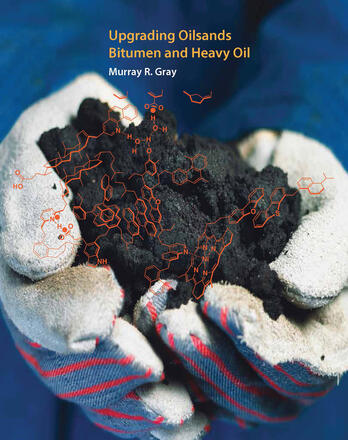Acknowledgements
Introduction
I.1 Crude Oil and Bitumen Definitions
I.2 Canadian Oilsands Resources
I.3 International Bitumen and Heavy Oil Reserves
I.4 Upgrading Bitumen and Heavy Oil
I.5 Economic Incentives for Upgrading
I.6 Outline of This Book
References
1. Density and Phase Behaviour
1.1 Density and API Gravity
1.2 Distillation Curves and Boiling Ranges
1.3 Average Molar Mass and Molar Mass Distribution
1.4 Vapour–Liquid Equilibrium
1.5 Solids in Crude and Processed Oils
1.6 Density and Average Molar Mass of Asphaltenes
1.7 Solubility Parameters of the Petroleum, Bitumen and Asphaltene Fractions
1.8 Water in Hydrocarbons
Abbreviations
Notation
References
2. Transport and Thermal Properties
2.1 Liquid Viscosity
2.2 Thermal Conductivity
2.3 Diffusion Coefficient
2.4 Surface Tension
2.5 Melting Point of Vacuum Residues and Asphaltenes
2.6 Thermal Properties of Bitumen Fractions
2.7 Heats of Combustion
Notation
References
3. Chemical Composition
3.1 Origins of Alberta Bitumens
3.2 Elemental Composition
3.3 Class Fractionation
3.4 Coke-Forming Tendency
3.5 Chemical Structures in Bitumen
3.6 Asphaltene Composition and Structure
3.7 Quality Issues with Bitumen, Heavy Oils and Oilsands Products
Abbreviations
References
4. Upgrading Reactions and Kinetics
4.1 Thermodynamics of Cracking
4.2 Mechanisms of Cracking Hydrocarbons
4.3 Overall Kinetics of Bitumen Cracking
4.4 Liquid- versus Vapour-Phase Cracking of Bitumen Components
4.5 Catalytic Reactions in Upgrading
4.6 Formation of Solids and Coke
4.7 Basic Equations for Reactor Analysis at Steady State
Abbreviations
Notation
References
5. Marketing of Bitumen Products
5.1 Crude Oil Exports
5.2 Crude Oil Pricing
5.3 Transportation of Bitumen and Upgraded Products
5.4 Trade-Offs Between Upgrading Cost and Product Quality
5.5 Natural Gas Supply and Properties
5.6 Natural Gas Condensate
5.7 Sulfur Transport and Marketing
References
6. Production of Bitumen and Heavy Oil
6.1 Mineable Oilsands
6.2 In Situ Production of Oilsands Bitumen
6.3 Improvements to In Situ Production
6.4 In Situ Upgrading Schemes
References
7. Overview of Upgrading Processing and Economics
7.1 Sequences of Upgrading Processes
7.2 Operating Costs of Upgrading Bitumen and Heavy Oil
7.3 Benchmarking of Production and Upgrading Strategies
7.4 Greenhouse Gas Emissions from Production and Upgrading Processes
7.5 Selection of a Primary Upgrading Technology
7.6 Relationships of Upgrading to Refining
7.7 Limits to Upgrading Heavy Oils and Bitumens
References
8. Separation Processes
8.1 Desalting
8.2 Atmospheric and Vacuum Distillation
8.3 Solvent Deasphalting
References
9. Thermal Cracking and Coking Processes
9.1 Visbreaking: Thermal Viscosity Reduction
9.2 Delayed Coking
9.3 Fluid Coking
9.4 Fluid Coking with Coke Gasification
9.5 Limits on Yield and Density for Coking and Thermal Cracking Products
9.6 Coke Yield and Composition
9.7 Recycle in Coking Processes
9.8 Liquid-Phase Mass Transfer in Coking Processes
9.9 Additives to Control Coke Yield
9.10 Development of New Coking Processes
9.11 Control of Sulfur Emissions from Coking Processes
9.12 Kinetic Modelling of Thermal Cracking and Coking Processes
9.13 Heat of Reaction of Visbreaking and Coking
Notation
References
10. Residue Hydroconversion Processes
10.1 Fixed-Bed Catalytic Processes
10.2 Catalytic Ebullated-Bed Processes: LC-Fining and H-Oil
10.3 Additive-Based Processes: Slurries, Suspensions and Solutions
10.4 Roles of Hydrogen and Catalysts in Suppressing Coke Formation
10.5 Limits to the Performance of Hydroconversion Processes
10.6 Hydrogenation Reactions During Hydroconversion
10.7 Heat of Reaction for Hydroconversion
10.8 Catalyst Deactivation in Hydroconversion
10.9 Kinetic Models of Hydroconversion
Notation
References
11. Hydrotreating Processes
11.1 Hydrotreating of Distillate Fractions
11.2 Conversion of Diolefins
11.3 Hydrotreating for Aromatics Saturation
11.4 Hydrocracking of Gas Oils
11.5 Hydrogenation Reactions During Hydrotreating
11.6 Stoichiometry of Catalytic Hydrogenation
11.7 Heats of Reaction of Hydrotreating Reactions
11.8 Catalyst Properties
11.9 Catalyst Deactivation
Notation
References
12. Hydrogen Production and Gas Purification Processes
12.1 Hydrogen Production Processes
12.2 Cost of Hydrogen Production
12.3 Purification of Hydrogen-Rich Process Streams
12.4 Gas Recovery
12.5 Amine Treating
12.6 Sulfur Removal
References
Appendix A: Glossary and List of Acronyms
A.1 Glossary of Selected Terms Commonly Used in the
Oilsands Industry
A.2 Common Acronyms in the Oilsands Industry
References
Appendix B: Assay Data for Bitumen and Upgraded Products
Index
